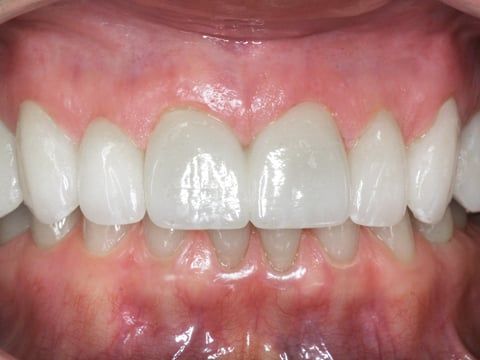gum disease
Gingivitis is an early stage of gum disease. Gingivitis develops as toxins, enzymes, and other plaque byproducts irritate the gums, making them tender, swollen and likely to bleed easily. Gingivitis generally can be stopped with proper oral hygiene and minor treatment from your dentist. If this is achieved, your gums can return to a healthy state.
Studies have shown links between periodontal (gum) disease, heart disease and other health conditions.
Research further suggests that gum disease may be a more serious risk factor for heart disease than hypertension, smoking, cholesterol, gender and ages.
Researchers conclusions suggest that bacteria present in infected gums can become loose and move throughout the body through the bloodstream. Once bacteria reach the arteries they can irritate them in the same way that they irritate gum tissue causing arterial plaque which builds up and can affect blood flow.
Moderate gum disease is when the tooth's bone tissue starts to deteriorate. Periodontitis occurs when plaque byproducts destroy the tissues that anchor your teeth in the bone. The gums deteriorate and begin detaching themselves from the teeth forming gum pockets, which allows more plaque to collect below the gum line. This causes the roots of the teeth to become susceptible to decay. Generally, patients notice an increase in sensitivity to hot and cold and to touch.
Suppress the urge to avoid cleaning teeth that are sensitive to cold! Teeth that have suffered damage from gum disease will always be more sensitive to cold. Avoiding them only makes it worse.
After any dental treatment, teeth may become sensitive. This is their way of letting you know that they've been injured. Any injury (cavity, tooth clenching/grinding, gum infection) can injure the nerves in a tooth. This should not last long if the teeth are kept clean. If the teeth are not kept clean, the sensitivity will remain or get worse.
If your teeth are especially sensitive consult with your dentist. This could be a sign of the need for root canal treatment or a gum tissue graft. Or a desensitizing toothpaste (with potassium nitrate) or concentrated fluoride gel (0.4% stannous- or 1.1% sodium-fluoride) may do the trick.

LEGAL DISCLAIMER. For the purpose of illustrating the possibilities of today's dental procedures, this web site may include models and/or generic before and after smile case examples. These examples do not represent a certainty of case performance for any single individual. Individual before and after results will vary. Patients should consult with their dentist before making a final decision.